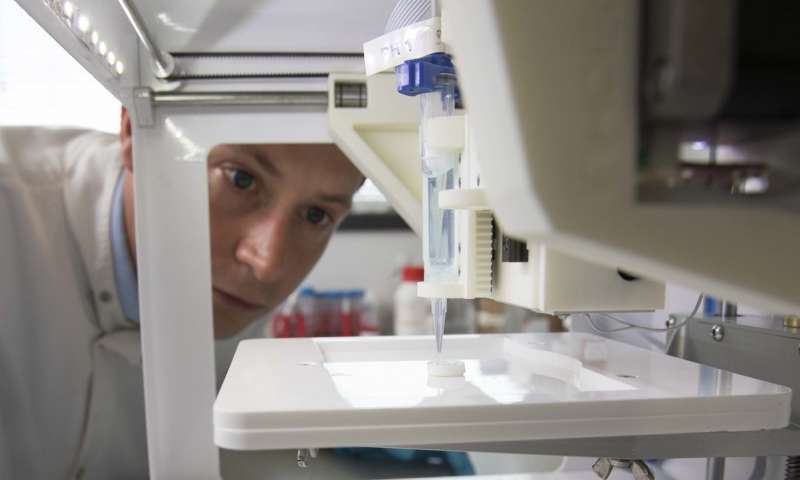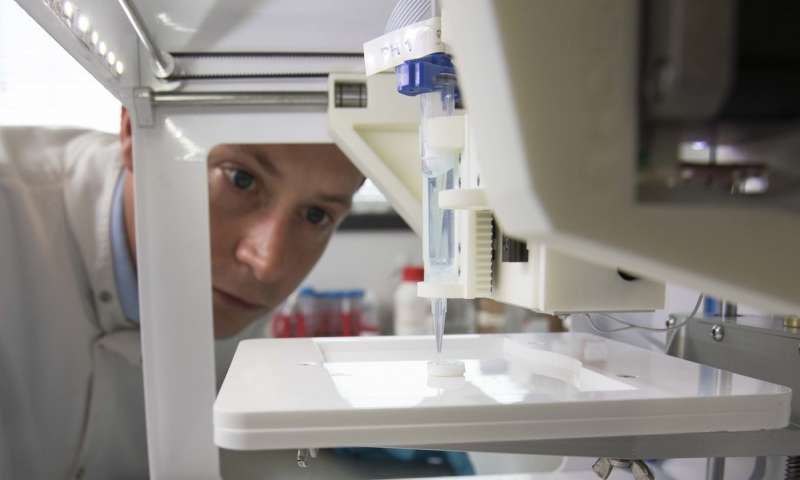Scientists create the first 3D-printed human corneas
And build hope for people with visual impairments.
Newcastle University researchers have devised a groundbreaking experimental technique that could help millions on the corneal transplant waiting list. By using a simple 3D bio-printer, Professor of Tissue Engineering Che Connon and his team of scientists were able to combine healthy corneal stem cells with collagen and alginate (a type of sugar sometimes used in tissue regeneration) to create 'bio-ink' -- a printable solution that enabled them to reproduce the shape of a human cornea in just 10 minutes.
The cornea has a significant role in helping us focus and barricading our eyes against dirt and bacteria. However, since it's located on the outermost layer of the eye, it's also pretty vulnerable to injury. Worldwide, approximately 10 million people risk corneal blindness due to infectious disorders like trachoma, but there's a dearth of readily available transplants. Because Connon's 3D-printed corneas utilize stem cells, corneal replicas could potentially provide a limitless supply of much-needed transplants.
"Our unique gel - a combination of alginate and collagen - keeps the stem cells alive whilst producing a material which is stiff enough to hold its shape but soft enough to be squeezed out the nozzle of a 3D printer," Connon said.
Before printing the corneal replicas, researchers scanned patients' eyes to ascertain the necessary dimensions and coordinates. While it's likely patients will have to wait "several years" before these 3D-printed corneas are available in an official capacity, they still represent incredible hope for those with more severe corneal-related impairments.



